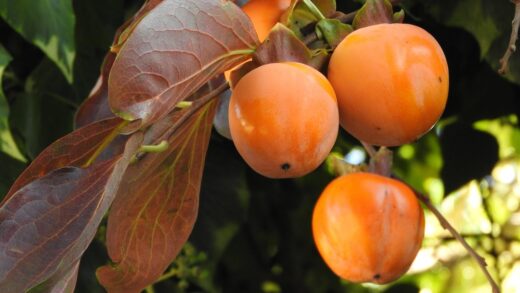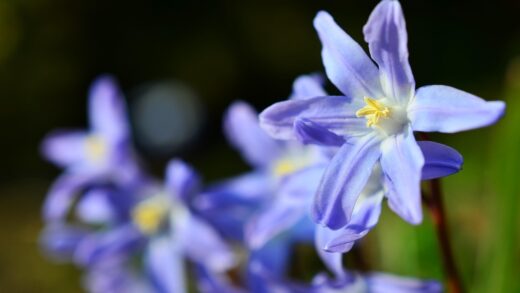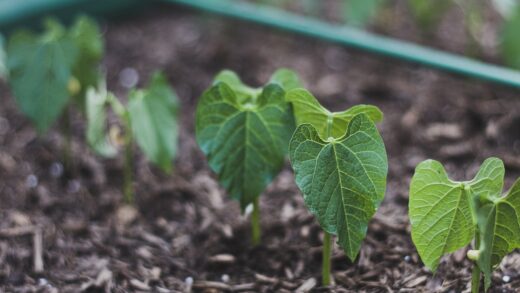The successful establishment of the Banat peony in a garden setting begins with a deep understanding of its specific planting requirements, which are intrinsically linked to its native habitat. This is not a plant that tolerates casual placement; it demands careful thought regarding location, soil preparation, and the physical act of planting itself. Proper planting is the foundation upon which years of breathtaking floral displays are built, ensuring the tuberous roots can establish themselves without stress. Propagating this rare subspecies, primarily through division, is a rewarding process that allows a gardener to multiply their collection and share this botanical treasure, but it must be undertaken with patience and precision to avoid damaging the parent plant and to ensure the viability of the new divisions.
The optimal time for planting the Banat peony is in the autumn, from September through to October. This timing allows the plant to focus all its energy on establishing a strong root system in the warm soil before the ground freezes, without the stress of having to support foliage and flowers. Planting in the spring is possible but generally less successful, as the plant will be trying to produce new shoots, leaves, and blooms simultaneously while also trying to grow new roots, often resulting in a weaker plant that may struggle during the heat of summer. An autumn planting gives the peony a crucial head start, leading to a much more robust and resilient plant in its first full growing season.
Selecting the right planting material
The quality of the peony root you begin with will have a significant impact on its future success. When purchasing or acquiring a Banat peony, look for a healthy, firm tuberous root division. A high-quality division will typically have at least three to five prominent reddish ‘eyes,’ which are the growth buds from which next year’s stems will emerge. The fleshy, tuberous roots themselves should be plump and free of any soft spots, mold, or signs of desiccation. Avoid small, withered divisions with only one or two eyes, as these may take several years to reach flowering size, if they survive at all. A larger, more robust root division has more stored energy and will establish itself more quickly and reliably.
It is also vital to source your plant material from a reputable nursery or grower who can guarantee the authenticity of the subspecies. The Banat peony is a specific and rare plant, and it is important to ensure you are not inadvertently planting a different, more common variety of Paeonia officinalis. Reputable suppliers will provide healthy, true-to-name plants that have been properly cultivated and prepared for sale. When the plant arrives, it should be planted as soon as possible. If immediate planting is not feasible, keep the root in a cool, dark place, lightly wrapped in moist paper towels or peat moss to prevent it from drying out before you are ready to place it in the ground.
When propagating your own plants through division, the selection of the parent plant is the first critical step. Choose a mature, well-established clump that is at least four to five years old and has been flowering vigorously. A healthy parent plant will have a substantial root system that can be divided without jeopardizing its own survival. Avoid dividing plants that have shown signs of disease or stress in the past season, as you risk transferring these problems to the new divisions. The goal is to select a prime specimen that has the vigor and stored resources to be successfully partitioned into multiple healthy, viable new plants.
More articles on this topic
After lifting the parent clump for division, the selection of the individual pieces is just as important as selecting a purchased root. Each division you create must have a good balance of both fleshy storage roots and a section of the crown containing those crucial three to five eyes. A division that consists only of a large piece of root with no eyes will never sprout, while a piece of crown with very few attached roots will struggle to support itself. Carefully inspect the lifted clump and plan your cuts to ensure that each new piece is a well-balanced, self-sufficient unit capable of growing into a new, independent plant. This careful selection is the key to successful propagation.
The ideal planting depth and technique
Achieving the correct planting depth is arguably the most critical factor in ensuring your Banat peony will flower. If planted too deeply, the plant will produce lush foliage year after year but will fail to set flower buds. Conversely, if planted too shallowly, the growth eyes can be damaged by late frosts or desiccated by the sun and wind. The rule of thumb is to position the root division so that the tops of the reddish growth eyes are no more than 3 to 5 centimeters below the final soil level. This shallow depth ensures the buds receive the slight winter chill they require to initiate flowering, without being exposed to excessive harm.
To achieve this precise depth, begin by preparing the planting hole as previously described, creating a cone or mound of amended soil in the center. Carefully place the root division on top of this mound, spreading the fleshy roots out and down, much like the spokes of a wheel. Adjust the height of the mound until the eyes on the crown are at the correct level relative to the surrounding soil grade. You can lay a straight edge, like a shovel handle or a piece of wood, across the top of the hole to accurately gauge the depth. It is a step that requires patience and precision but is absolutely essential for a successful planting.
Once the root is perfectly positioned, you can begin to backfill the hole with your prepared soil mix. Gently work the soil in and around the fragile roots, being careful not to break them or leave large air pockets. Air pockets around the roots can lead to them drying out and can hinder the establishment of the plant. Fill the hole until it is about halfway full, and then water gently but thoroughly. This will help to settle the soil around the lower roots and eliminate any trapped air. Allow the water to drain away completely before proceeding with the final backfilling.
More articles on this topic
Complete the process by filling the remainder of the hole with soil, ensuring the crown and eyes are covered to the final, correct depth of 3 to 5 centimeters. Lightly firm the soil around the plant with your hands, but avoid compacting it heavily, as this can impede drainage and root growth. After the final backfilling, give the area another thorough watering to settle the entire planting. It is not recommended to add a thick layer of mulch directly on top of a newly planted peony in the autumn, as this can trap too much moisture and encourage the crown to rot. A light covering of straw after the ground freezes is sufficient.
The process of division
Division is the most reliable and common method for propagating the Banat peony, and it should be performed in the autumn, at the same time as you would plant new roots. The process begins with the careful excavation of a mature, established clump. Start digging several inches away from the outermost stems of the plant to avoid damaging the extensive root system. Use a sharp spade or garden fork to gently loosen the soil all the way around the plant, and then carefully lever the entire clump out of the ground. The root ball will be heavy and dense, so this may require considerable effort.
Once the clump is lifted, the next step is to remove the excess soil so you can clearly see the crown and the structure of the root system. You can gently shake the clump or use a steady stream of water from a hose to wash away the soil. With the roots exposed, you can identify the individual growth eyes on the crown. Your goal is to divide the large clump into smaller sections, each containing a healthy portion of the crown with at least three to five eyes and a substantial amount of attached storage roots. This balance is critical for the viability of each new division.
Using a strong, sharp knife or a clean, sterilized spade, you can now make the cuts to divide the crown. Plan your cuts carefully to ensure each resulting piece meets the criteria of having sufficient eyes and roots. It is often necessary to apply firm, steady pressure to cut through the dense, woody crown. Some roots may inevitably be broken during this process, which is acceptable, but try to keep the main tuberous roots intact with their corresponding crown sections. After dividing the clump, inspect each new piece and trim away any broken or damaged roots with a clean cut to prevent rot.
The newly created divisions should be planted as soon as possible to prevent them from drying out. Treat them exactly as you would a newly purchased root, planting them in a well-prepared site at the correct shallow depth. It is important to note that newly divided peonies may take a year or two to re-establish themselves and return to their full flowering potential. This dormant period is normal as the plant directs its energy towards developing a new, robust root system. This patient process of division is a wonderful way to increase your stock of this special plant and ensure its continuation in cultivation.
Propagation from seed
Propagating the Banat peony from seed is a journey for the patient gardener, as it is a much slower and more complex process than division, often taking five to seven years or more to produce a flowering plant. The seeds of the peony have a complex double dormancy, meaning they require a period of warmth followed by a period of cold to trigger germination. To begin, you must first harvest the seeds from the plant after it has flowered. Allow the seed pods to mature on the plant until they begin to split open in late summer or early autumn, revealing the large, dark seeds inside. Collect the seeds before they are dispersed.
For the highest chance of success, the seeds should be sown immediately after harvesting while they are still fresh. You can sow them directly into a prepared seedbed in a sheltered part of the garden or in pots. Plant the seeds about 2-3 centimeters deep in a well-draining, sandy soil mix. The first stage of germination, which is the development of the root, requires a period of warmth. The warm soil temperatures of late summer and early autumn will hopefully be sufficient to break the first stage of dormancy and encourage the seed to produce a primary root before winter arrives.
Following the warm period, the seed, which has now hopefully developed a root, requires a prolonged period of cold stratification to break the second stage of dormancy and trigger the emergence of the first leaf. This is naturally provided by the cold temperatures of winter. If you are growing the seeds in pots, you can leave them outdoors in a protected location where they will be exposed to the winter cold but shielded from harsh winds and excessive moisture. This cold period needs to be at least three to four months long with temperatures consistently below 4°C.
After experiencing a sufficient cold period, the first leaf should emerge in the spring as the weather warms. The young seedling will be small and will grow slowly in its first few years. It is crucial to keep the seedlings consistently moist but not waterlogged and to protect them from strong sun and competition from weeds. You can continue to grow them in pots for the first couple of years before transplanting them to their final location in the garden. Propagating the Banat peony from seed is a true labor of love, a long-term project that offers the unique reward of having nurtured this rare plant from the very beginning of its life cycle.


















